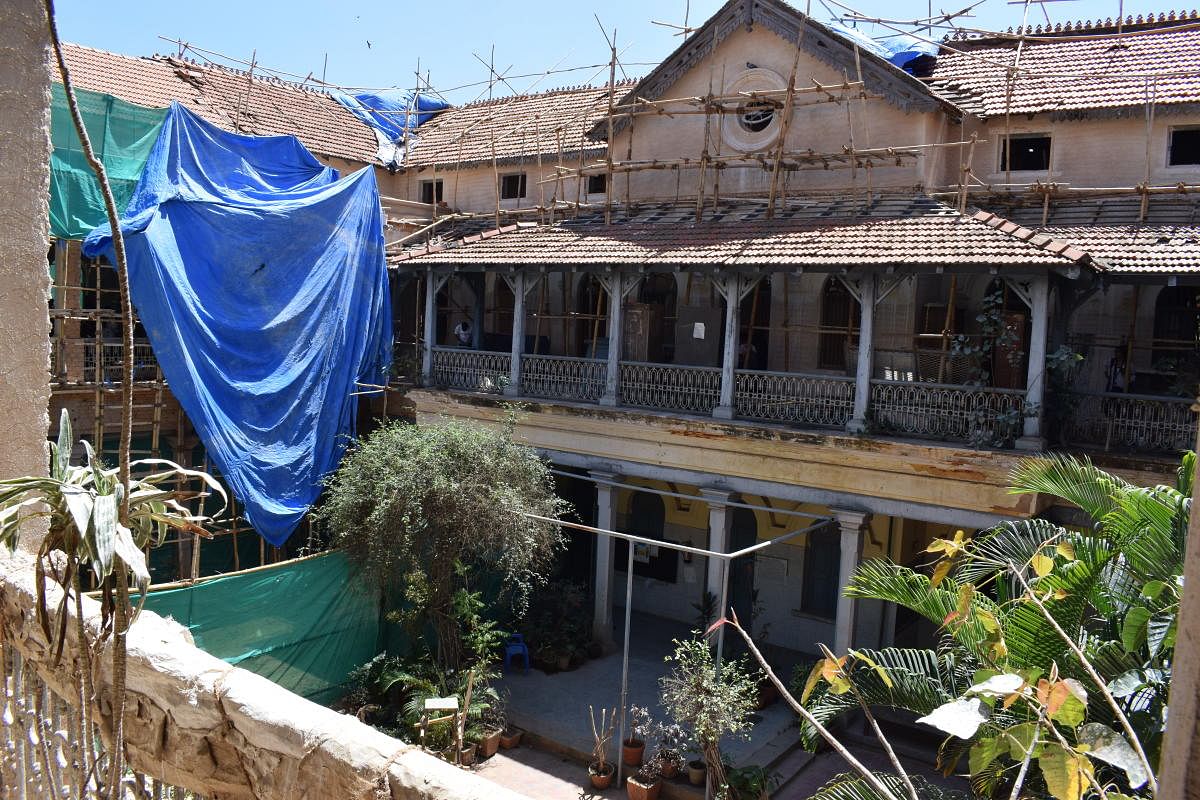
After two years of sustained effort, the 114-year-old Fort High School in the historical core of Bengaluru stands transformed. The restoration undertaken by the Indian National Trust for Art and Cultural Heritage (INTACH) has refurbished the iconic structure in a style that is a throwback to the city’s old-world charm.
Awash in bright red paint, standing on a two-acre plot, this was the first school started by the Maharaja of Mysore for the general public. In its heyday, the school was the only institution that provided publicly-funded education for all, with umpteen batches of students walking out of its hallowed portals to serve the State faithfully.
The school’s foundation was laid in 1907 and the building that came up had a blend of elements from both colonial and vernacular architectural styles.
Located close to Chamrajpet, the first planned urban colony built in Bengaluru in 1892, the Fort High School had a broad platform and verandahs in front, besides the large forecourt. The octagonal projecting bays and ornamented roman arches showed the colonial influence, while the central courtyard and slanted roofs resting over stone or wooden pillars are characteristic of regional architecture.
The structure mainly used conventional materials like bricks, lime, sand, mortar and jaggery. Concrete had not yet made its foray into construction in a major way. While roofs were covered with terracotta Mangalore tiles, Kota stone were used for the flooring.
What makes the Fort High School stand out is the use of the ‘Polonceau Truss’ (a web of triangles commonly used to support bridges and roofs) to support the huge tiled roof covering the central hall. Developed by French engineer Camille Polonceau, the truss had just been introduced in architecture across Europe in the 19th century; the truss used here seem to have been imported from England.
More than a century later, the structure remains robust. However, water seepage through the roof, vast patches of withered plaster, plants (even trees) sprouting from crevices and termite-ridden beams had imparted it a dilapidated look. Several window panels and planks were missing, while most of the teak wood beams and rafters were still in good condition. A six-foot deep cut excavated along the plinth to check the foundation revealed that the structure was firmly footed.
Extensive restoration
The restoration work involved plastering around 6,500 sq metres of wall and replacing nearly 60 per cent of the stone flooring — 3,000 sq metres — with the same material originally used. Supervisor A G Naiker says the gummy pulp of bael fruit sourced from villages in surrounding districts was also mixed with the mortar for plastering, to maintain the authenticity of the restoration work.
The missing door and window panels were replaced and varnished afresh. Removing a termite-infested 23-foot teak wood beam was a challenge, as a replacement of the same dimension was not available; the carpenters had to assemble a similar beam. Nearly a quarter of Mangalore tiles of the roof, which were replaced, were ordered from Kolar. While stone pillars were lightly chiselled for a new look, some of the wooden pillars in the first floor had to be replaced.
According to site architect Divya, on an average seven to eight masons, 20 workers, around 10 carpenters, two electricians and four supervisors formed the restoration team.
Pankaj Modi, a conservation architect and project coordinator working for INTACH, says the edifice could survive for another century, provided due care is taken to maintain the historic building.
